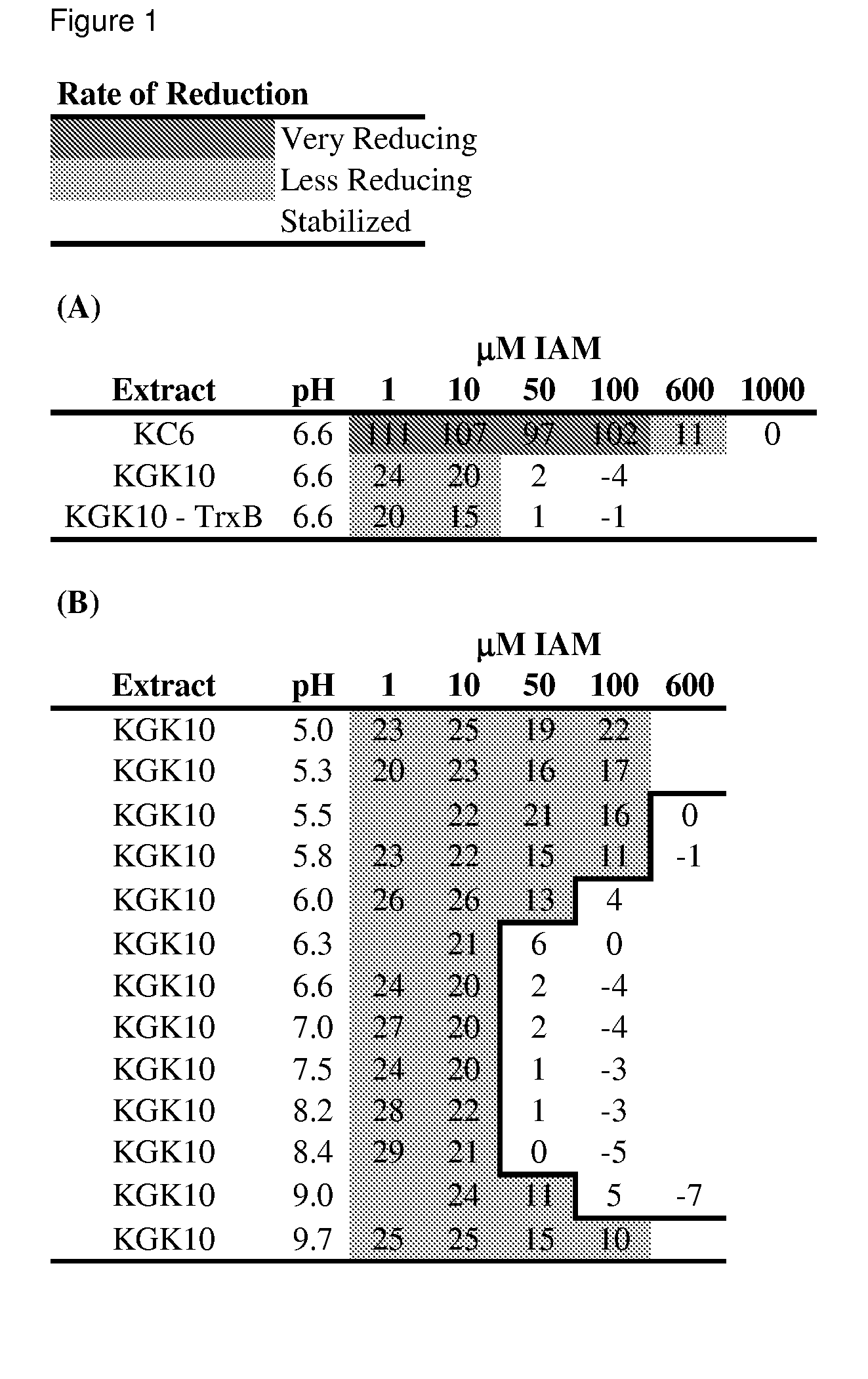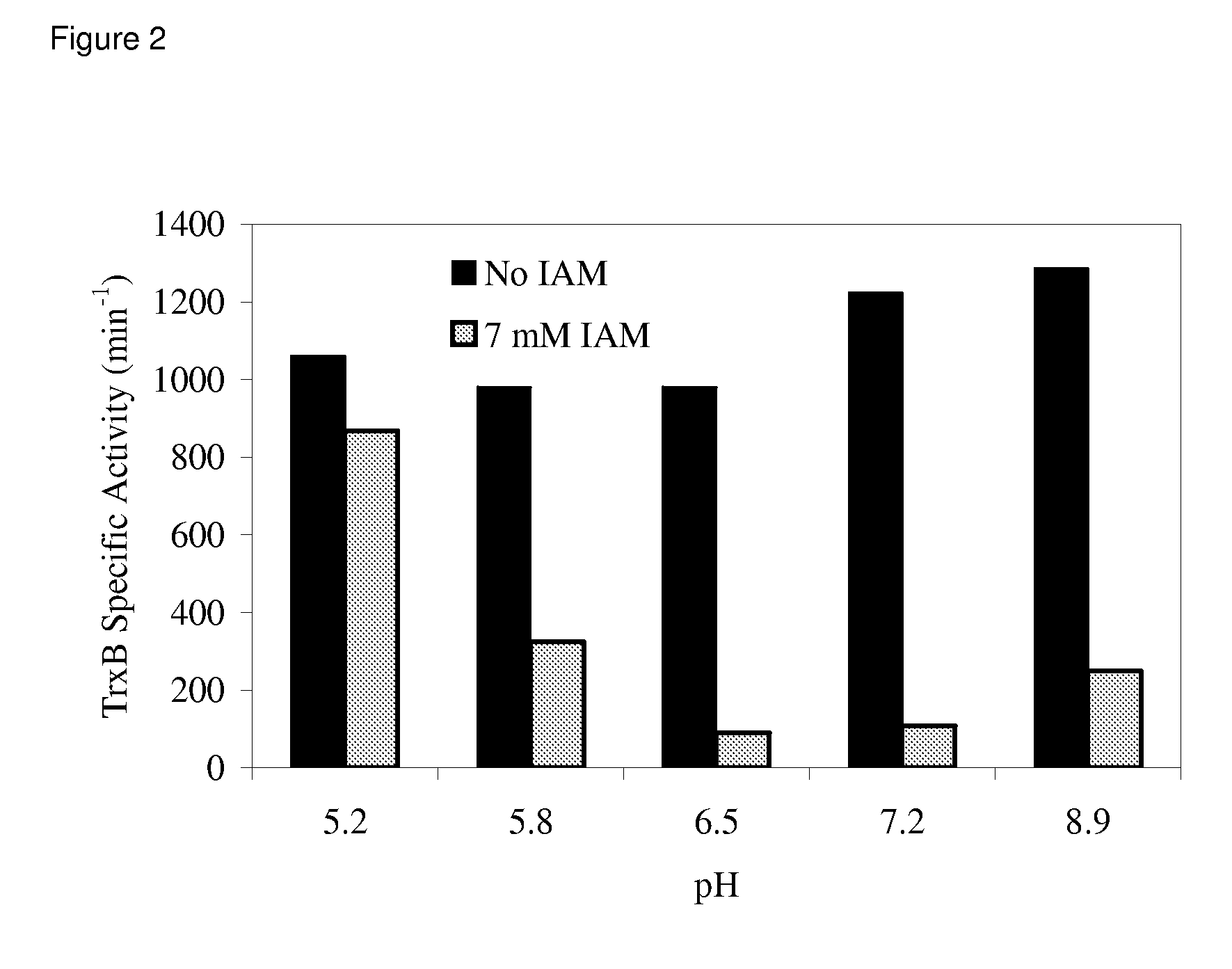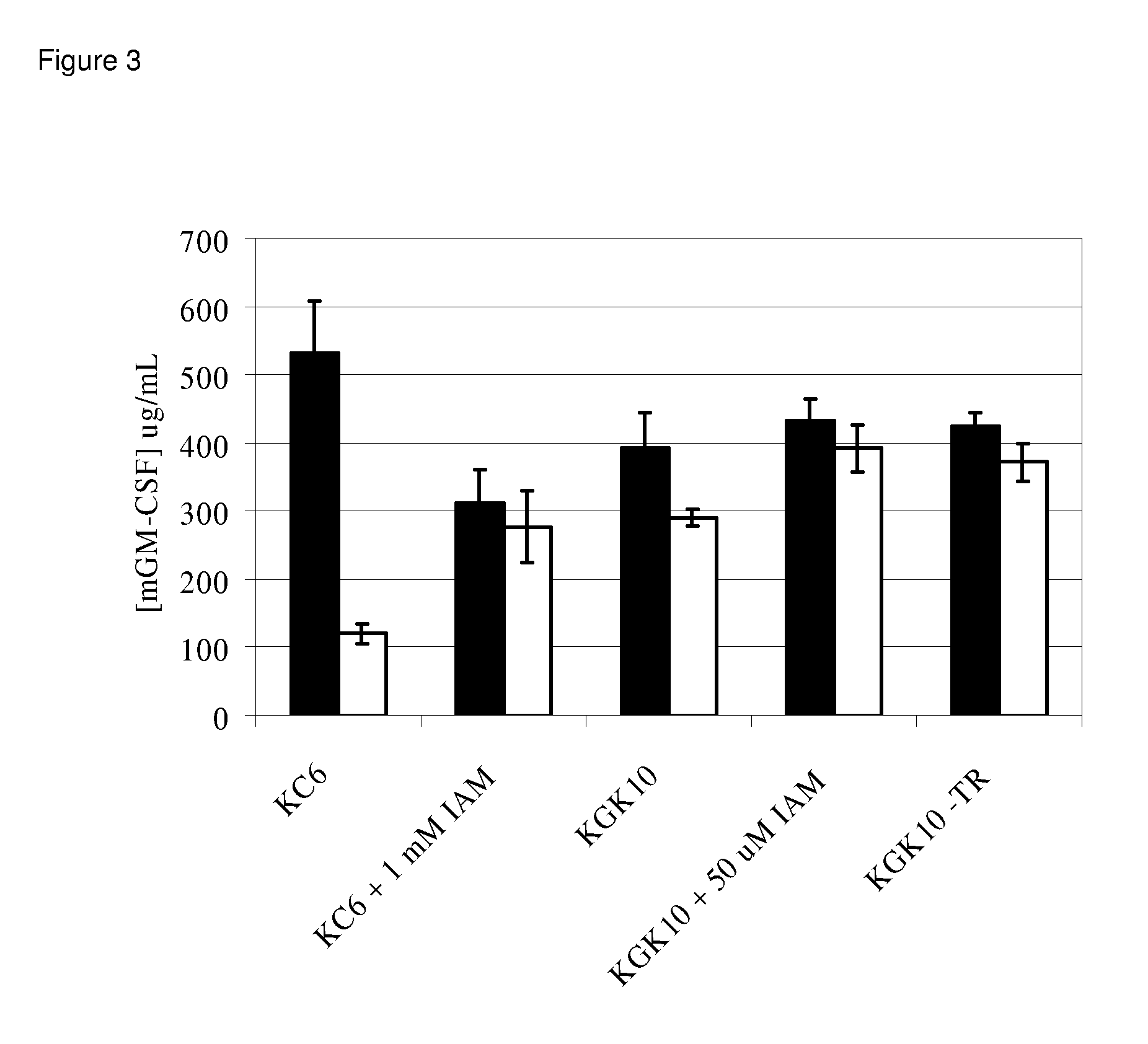Enhanced cell-free synthesis of active proteins containing disulfide bonds
a technology of disulfide bonds and active proteins, which is applied in the field of enhanced cell-free synthesis of active proteins containing disulfide bonds, can solve the problems of complex expression of mammalian proteins, difficulty in refolding of aggregated proteins, and high protein synthesis rate, so as to accelerate the rate-limiting covalent steps of folding and stabilize the redox potential of reaction mixes. , the effect of accelerating the rate-limiting covalent steps
- Summary
- Abstract
- Description
- Claims
- Application Information
AI Technical Summary
Benefits of technology
Problems solved by technology
Method used
Image
Examples
example 1
Materials and Methods
[0098]Construction of the KGK10 Strain. The objective here was to delete the gene encoding glutathione reductase (Gor) and to add the coding sequence for a hemagglutinin tag (HA Tag) to the trxB gene. For the latter, a PCR cassette was generated using the primers TrxB-HAFor (5′-tgatgcggaacgctacctcgatggtttagctgacgcaaaatacccatatgacgtcccggactacgcctaataaGTGTAG GCTGGAGCTGCTTC) and TrxB-HARev (5′-gtcgcatggtgtcgccttctttacttttgttactgatttCA TATGAATATCCTCCTTAGT) with the pKD3 plasmid template as described (Datsenko and Wanner (2000) Proc Natl Acad Sci USA 97:6640-5). In these primers, regions of homology are shown in lower case, the HA tag sequence is underlined, stop codons are in bold, and regions that anneal to the pKD3 plasmid are in capital letters. The cassette was transformed into the BW25113 pDK46 strain and selected on LB-Chloramphenicol. P1 bacteriophage transduction was used to move the genomic modification from a successful recombinant into KC6. FLP recombinas...
PUM
| Property | Measurement | Unit |
|---|---|---|
| concentration | aaaaa | aaaaa |
| concentration | aaaaa | aaaaa |
| pH | aaaaa | aaaaa |
Abstract
Description
Claims
Application Information
 Login to View More
Login to View More - R&D
- Intellectual Property
- Life Sciences
- Materials
- Tech Scout
- Unparalleled Data Quality
- Higher Quality Content
- 60% Fewer Hallucinations
Browse by: Latest US Patents, China's latest patents, Technical Efficacy Thesaurus, Application Domain, Technology Topic, Popular Technical Reports.
© 2025 PatSnap. All rights reserved.Legal|Privacy policy|Modern Slavery Act Transparency Statement|Sitemap|About US| Contact US: help@patsnap.com



